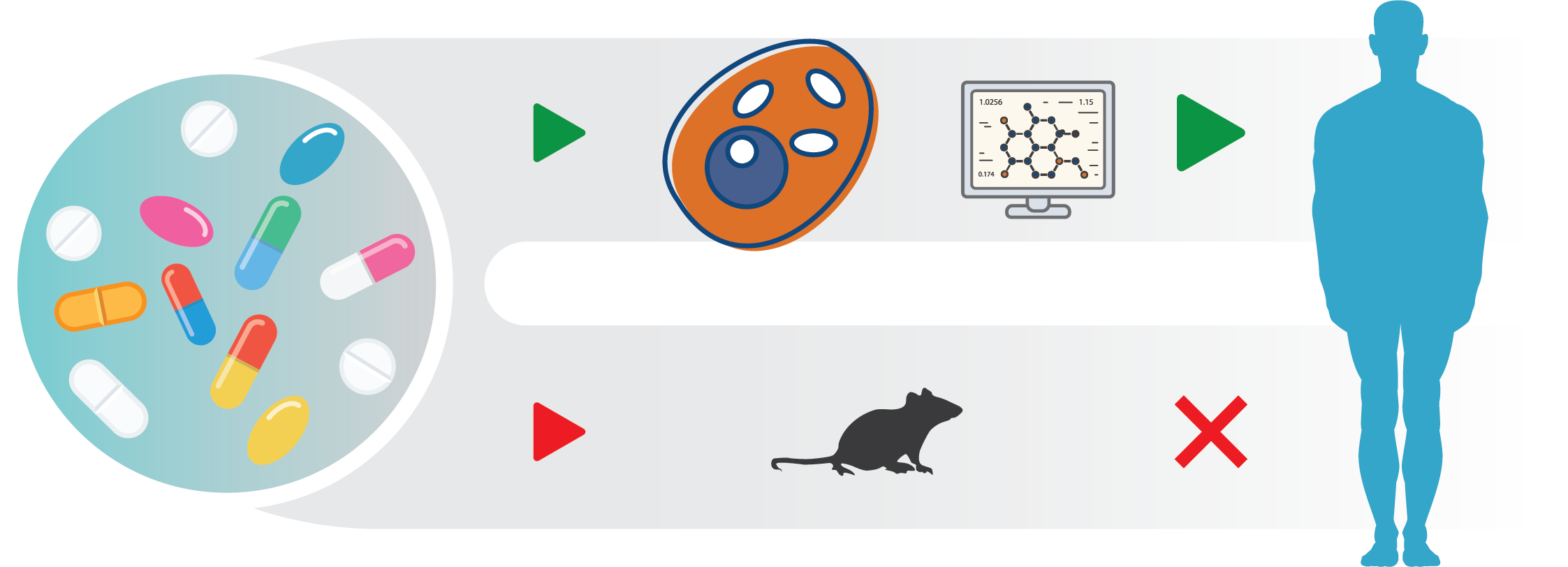Services
How we help clients
To determine the safety or efficacy of compounds be it an ingredient or a drug candidate, the traditional approach is to conduct experiments using animal studies: animals are exposed to the compound and diseases, or early death are compared for a group of animals exposed to a control. ScitoVation helps clients determine the safety of compounds using new approach methods (NAMs) otherwise known as non-animal methods. These approaches include cell-based and computer modeling techniques; they save clients time and money and are more biologically relevant to humans.
Here are examples of how we typically help clients:
- Understanding the doses at which a compound is safe (Compound Screening): This may include a single compound or a library of compound. For an existing client, we screen 30 compounds a month to determine the ones that have a safer profile. We’ve also performed in-depth analysis on lead compounds or compounds that are already in the marketplace to help address concerns raised by regulators or other stakeholders.
- Understanding the mode of action of a compound (Mode of Action): A client came to us because they saw cancer in rats that they didn’t expect to occur in humans. We were able to show that the mode of action of the compound (Ppar-alpha) would lead to cancer in rats but not humans.
- Translating data from animal studies or in vitro studies to ascertain safe levels in humans: This area of toxicology called dosimetry is one of our key areas of expertise. We used computer modeling techniques known as PBPK models to help determine safe levels for humans for a class of chemicals known as pyrethroids.With our modeling exercise, we were able to show that children were not more sensitive than adults. We submitted the data to the US Environmental Protection Agency (EPA) and based on it, they removed an artificial adjustment factor for children.
Clients choose ScitoVation because:
- Multi-disciplinary aspect of our team: Our solutions are informed by a team with a broader prospective; hence increasing the likelihood that our solutions are likely to be innovative.
- We offer customized solution to our clients based on their chemistry and intended use. We do not make their problems fit into our solutions.
- Accessibility and flexibility: Because we see ourselves as partners, we are flexible to changing timelines, priorities and scope
- Scientific Credence: Because of our scientific reputation, clients can depend on the fact that a ScitoVation solution is more likely to be accepted by stakeholders in the risk assessment community.
- We published between 15 to 25 papers per year
- We have developed our own software tools that have received rave reviews including 1) PLETHEM for modeling the disposition of chemicals in the body or translating observed exposure in laboratory studies (animal or in vitro) to humans and 2) MoAViz for the analysis and visualization of data from toxicogenomic studies
- We have pioneered the development of methods (assays) to address toxicity for the most complex organs such as the lung

Services
Common Problems We Solve
Technologies
High Content Imaging
In vitro to in vivo extrapolation (IVIVE)
PBPK Modeling
Toxicogenomic or Pharmacogenomic Studies
Cell Based Assays
Organ Specific
Liver toxicity
Respiratory Toxicity
Thyroid toxicity
Industry
Chemical Manufacturers and Consumer Products
Pharma
Industry Associations
